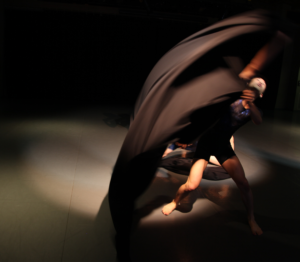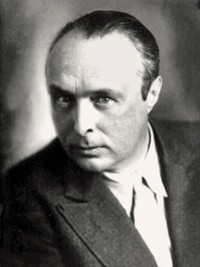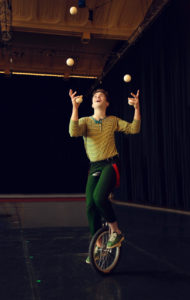By Laurie Cameron, Registered Movement Pattern Analyst

My choreographic process has always involved collaborative research – studio time in which “problems” that I have invented (usually based on a theme) are solved in various ways by the artists who will eventually perform whatever eventually materializes. As the director of the process, my job is to organize and orchestrate largely improvised material into some kind of coherent, presentable form.
With strong motivations in both Timing and Anticipating, it has always been important to me to move the process toward a “finished product” in a timely fashion, assuming that all involved trusted me to make sound artistic decisions and hoping to avoid hours of grueling studio work that might not necessarily produce more interesting results.
During my Movement Pattern Analysis training, I had the opportunity to profile three movement artists – a traditional, highly trained modern dancer, a B-Boy, and a Corporeal Mime practitioner. I was impressed by the diversity of their skills, their interest in self-growth, and their willingness to dive headlong into the choreographic unknown with me. I was even more intrigued by the profile initiatives that they shared, particularly high Investigating and Evaluating, and low-to-moderate Commitment. At the time I anticipated the challenge of moving them out of the Attention and Intention stages to commit to a final product. I did not expect to lose control of the process in such a meaningful and productive way.
I had anticipated three months of studio research followed by an informal showing, more editing, and eventually a fully realized performance about six months later. Instead, the energy to dig deeply, evaluate, reinvent and reimagine took over. All three performers seemed perfectly happy to mine material and critically assess for hours at a time with no performance agenda in sight. For me, the satisfaction of watching the work grow deeper and more refined validated the assessment process. I found my own moderate Evaluating being nourished while my urge to push the piece to completion seemed to relax. We worked in the studio for more than a year before my urge to set a finished piece took hold.
Of all the works I have directed, I am proudest of this. The images suggested by the myths of the Black Sea are, to me, fully realized, and the performers are deeply in tune with each other and with the material they grew with for so long. This process would likely have followed the same course regardless of my knowledge of MPA, but the awareness I now have of the potential for fruitful creative interaction based on decision-making preferences can inform my choreographic process in ways I had never predicted.
 I have been re-reading Laban’s autobiography in preparation for teaching “Mastering Rudolf Laban’s Mastery of Movement.” Laban’s writings are evocative, and I always find him to be good company.
I have been re-reading Laban’s autobiography in preparation for teaching “Mastering Rudolf Laban’s Mastery of Movement.” Laban’s writings are evocative, and I always find him to be good company.
 Mastery of Movement is for body and effort what Choreutics is for space and shape – the most comprehensive treatment of Laban’s ideas in English. The book has an interesting history.
Mastery of Movement is for body and effort what Choreutics is for space and shape – the most comprehensive treatment of Laban’s ideas in English. The book has an interesting history. In his observation and analysis of thousands of business executives,
In his observation and analysis of thousands of business executives,  The application of Movement Pattern Analysis in building teams was not the focus of my experiment with making basic profiles of undergraduate dance majors for a seminar on career development. However, I realized that an implicit team relationship clearly exists between student and teacher.
The application of Movement Pattern Analysis in building teams was not the focus of my experiment with making basic profiles of undergraduate dance majors for a seminar on career development. However, I realized that an implicit team relationship clearly exists between student and teacher. One problem for an actor is character similarity — does each character portrayed exhibit the actor’s habitual movements? Having a Movement Pattern Analysis profile gives the actor an understanding of his own thought process so he can see how it differs from his character’s process. Moreover, he can learn his personal movement characteristics/habits that arise from this thought process.
One problem for an actor is character similarity — does each character portrayed exhibit the actor’s habitual movements? Having a Movement Pattern Analysis profile gives the actor an understanding of his own thought process so he can see how it differs from his character’s process. Moreover, he can learn his personal movement characteristics/habits that arise from this thought process.
 The very first time we encounter a stranger, we derive an impression based on the person’s physical attributes and body language. Then rapidly and without conscious or logical control, we form a judgment – is the person positive, negative, or neutral?
The very first time we encounter a stranger, we derive an impression based on the person’s physical attributes and body language. Then rapidly and without conscious or logical control, we form a judgment – is the person positive, negative, or neutral? Movement occurs in patterns, and these patterns are both expressive and meaningful. In 2017, MoveScape Center’s Red Thread offerings focus on the patterned aspects of movement behavior – in everyday activity, in effort, and in space.
Movement occurs in patterns, and these patterns are both expressive and meaningful. In 2017, MoveScape Center’s Red Thread offerings focus on the patterned aspects of movement behavior – in everyday activity, in effort, and in space. The aim of choreutic practice, according to Rudolf Laban, is “to stop the process of disintegrating into disunity.” In his view, bodily movement “can have a regenerating effect on our individual and social forms of life.”
The aim of choreutic practice, according to Rudolf Laban, is “to stop the process of disintegrating into disunity.” In his view, bodily movement “can have a regenerating effect on our individual and social forms of life.” When the dancer Rudolf Laban began to study work movement in British factories, two concerns predominated. The first was efficiency; the second was fatigue. By the 1940s, of course, there were laws governing the length of the workday and providing additional protection for the health and safety of workers. Nevertheless, repetitive activity of any sort is tiring. Human beings are not machines. We cannot repeat any motion endlessly without the need for variation.
When the dancer Rudolf Laban began to study work movement in British factories, two concerns predominated. The first was efficiency; the second was fatigue. By the 1940s, of course, there were laws governing the length of the workday and providing additional protection for the health and safety of workers. Nevertheless, repetitive activity of any sort is tiring. Human beings are not machines. We cannot repeat any motion endlessly without the need for variation.